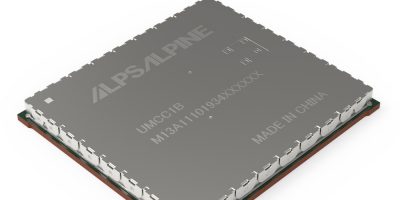There are 15 digital multi-phase controllers and six smart power stages in the second generation suite of products for the IoT infrastructure, released by Renesas Electronics.
The digital multiphase controllers and smart power stages support 10A to over 1000A digital computing loads for advanced CPUs, FPGAs, GPUs and AI ASICs for the IoT infrastructure. The ISL6822x, ISL6823x, RAA2282xx digital multi-phase controllers and ISL993xx, RAA2213xx smart power stages have been added to the company’s 41 devices already in its digital multi-phase platform to increase power densities in data centre servers, storage, optical transport, routers, switches, as well as computing and 5G wireless infrastructure equipment.
Renesas believes it is the only supplier with 20-phase controllers for high current 1000A+ GPUs and AI ASICs. Andrew Cowell, vice president of Mobility, Infrastructure and IoT Power business division at Renesas, said that the patented synthetic current control architecture delivers the fastest transient response, reduced output capacitance and lower system cost. “In addition, the digital multiphase controllers significantly reduce time to market with solder-free tuning of any application using Renesas’ PowerNavigator software,” he added. It is claimed to be the first for digital multiphase controllers.
The digital multi-phase controllers enable greater scalability and flexibility to adapt to any system requirement without requiring phase doublers, says the company. From two phases to 20 native phases, the choice of controllers can be configured for a range of applications, depending on output current requirements. Individual points can be set for adding/dropping phases to maximise efficiency across the entire load range. Each controller’s on-chip non-volatile memory allows the configuration to be saved to the device. This eliminates the need for discrete components for set up and tuning. A black box captures fault events, allowing faster diagnostics and debugging.
The controllers’ digital engine features a patented synthetic current control architecture that tracks each phase current with zero latency. As a result, the device can respond to any load transient with precise current and voltage positioning, and 30 per cent less capacitance than competitive devices, according to Renesas. Synthetic current control also makes it possible to develop high reliability systems using all ceramic capacitors.
Full digital control of the power supply enables the entire system to be monitored and controlled via PMBus and AVSBus interfaces to the system managers. The AVSBus interface allows connection to any ASIC or processor for monitoring and adaptive voltage positioning. This adjusts the power supply to the load requirements for energy efficiency. The PMBus interface provides full monitoring of I/O voltages and currents, temperature and fault reporting. Combining the digital multi-phase controllers with various smart power stages allows each individual phase to accurately monitor its current.
The ISL993xx and RAA2213xx smart power stages provide 20A to 90A of maximum continuous current. They have an integrated driver and FETs in compact packages for space-constrained designs. The level of integration coupled with current sense capability delivers at least 30 per cent board space savings over traditional power solutions, which typically employ separate drivers and discrete FETs, reports Renesas. The smart power stage devices have a smart driver, which can provide a reconstruction of the inductor current by sensing the FETs within the device.
The smart power stages also integrate precise current sense and reporting, simplifying power designs by eliminating the need for complex temperature and inductor DCR compensation. The current reporting is guaranteed at two per cent accuracy over line, load and temperature. This is a significant improvement over DCR sensing which suffers from lack of temperature compensation, inductor DCR variance and time constant error with load, claims Renesas.
The PowerNavigator software provides configurability and debugging tools in a single graphical user interface (GUI). Power designers can configure the controller, set the parameters to tune the system and debug/monitor using the black box, high speed command logging, and digital test bus features.
The 15 new digital multiphase controllers are available now in 4.0 x 4.0mm to 8.0 x 8.0mm QFN packages and the new smart power stages are available in 4.0 x 5.0mm to 5.0 x 6.0mm QFN packages.
http://www.renesas.com







